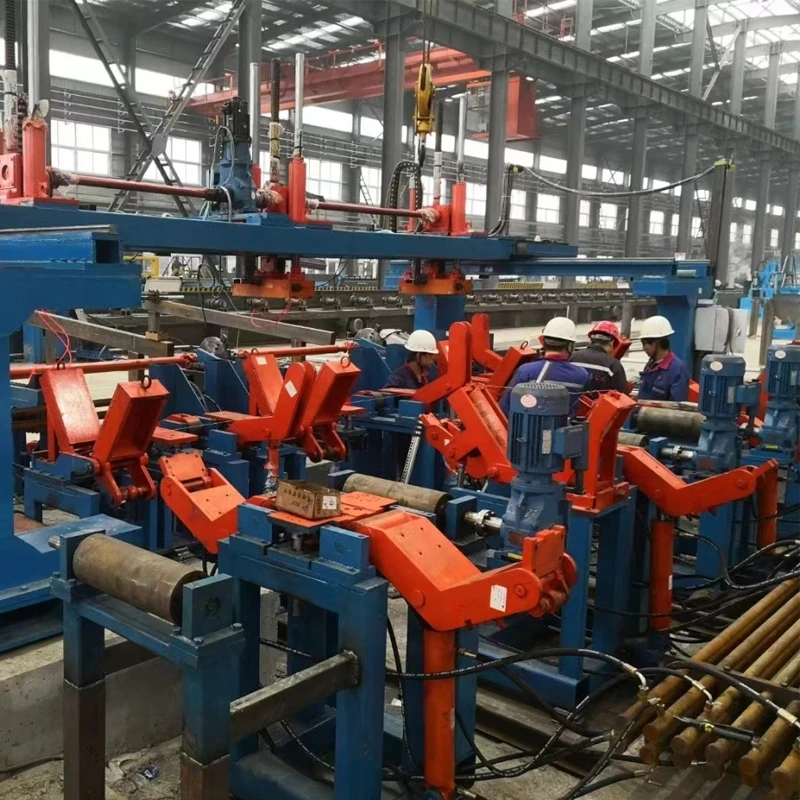Understanding the Process and Benefits of Transfer Molding in Manufacturing
Understanding Transfer Molding Press A Key Technology in Manufacturing
Transfer molding is a widely used manufacturing process, particularly in the production of thermosetting plastics and rubber. With the increasing demand for precise and efficient manufacturing techniques, the transfer molding press has emerged as a vital piece of equipment in various industries, including automotive, electronics, and consumer goods.
What is Transfer Molding?
Transfer molding involves the use of a closed mold system where a viscous material, typically a pre-measured amount of thermosetting resin or rubber, is transferred into a mold cavity. This process is characterized by the ability to provide intricate shapes and smooth finishes while maintaining tight tolerances. Unlike compression molding, where the material is placed directly into the open mold, transfer molding requires the material to be heated and forced through a series of channels before entering the mold, allowing for more uniform material distribution and better fill of complex geometries.
The Transfer Molding Process
The transfer molding process can be broken down into a few key steps
1. Preparation The raw materials, typically in the form of resin pellets, are loaded into a heated chamber known as the transfer pot. The pot is usually equipped with a plunger that pushes the material into the mold.
2. Heating and Melting The transfer pot is heated to a specific temperature to melt the resin. This temperature is critical as it ensures the resin reaches a proper viscosity for optimal flow into the mold cavity.
3. Transfer Once the material is melted, the plunger is activated to force the molten resin through transfer channels into the mold. This internal pressure ensures that the mold is completely filled, minimizing the chances of air pockets or voids.
4. Curing After the mold cavity is filled, the material continues to be subjected to heat, allowing it to cure. This curing process chemically cross-links the resin, turning it from a viscous liquid into a solid, durable product.
transfer molding press

Advantages of Transfer Molding Press
Transfer molding presses offer several significant advantages
- Complex Shapes The ability to create intricate shapes and fine details makes transfer molding suitable for a variety of applications, including electrical insulators, automotive components, and consumer electronics.
- Material Efficiency As the process uses precise amounts of material with minimal waste, transfer molding is more material-efficient compared to other molding techniques.
- Consistency and Repeatability The process produces uniform parts with consistent quality, which is essential for industries requiring strict adherence to specifications.
- Reduced Cycle Times While the initial setup may be time-consuming, once established, transfer molding generally leads to quicker production cycles compared to other methods, due to the efficiency of the material transfer and curing phases.
Applications of Transfer Molding
The versatility of the transfer molding process makes it suitable for a wide range of applications. In the automotive industry, it is frequently used to manufacture components like gaskets and seals. In the electronics sector, transfer molded parts are integral to creating housings and insulators that require high precision and durability. Furthermore, the consumer goods market also benefits from transfer molding in producing everyday items, such as appliance components and tool handles.
Conclusion
In conclusion, the transfer molding press is an essential tool in modern manufacturing, enabling the production of high-quality, durable components across various industries. Its ability to create complex shapes with material efficiency and consistency ensures that it will continue to play a critical role in meeting the growing demands of manufacturing processes worldwide. As technology advances and industries evolve, the importance of transfer molding presses will only increase, solidifying their place as a cornerstone of manufacturing technology.
-
High Frequency Straight Seam Welded Pipe Production Line-BzZhou Xinghua Machinery Equipment Manufacturing Co., LTD.|line pipe steel&welded gas pipeNewsJul.30,2025
-
High Frequency Straight Seam Welded Pipe Production Line-BzZhou Xinghua Machinery Equipment Manufacturing Co., LTD.|High Precision&Automated SolutionsNewsJul.30,2025
-
High Frequency Straight Seam Welded Pipe Production Line - BzZhou Xinghua Machinery Equipment Manufacturing Co., Ltd.NewsJul.30,2025
-
High Frequency Straight Seam Welded Pipe Production Line-BzZhou Xinghua Machinery Equipment Manufacturing Co., LTD.|Precision Welding, High EfficiencyNewsJul.30,2025
-
High Frequency Straight Seam Welded Pipe Production Line|BzZhou Xinghua|Precision Welding&EfficiencyNewsJul.30,2025
-
High Frequency Straight Seam Welded Pipe Production Line - BzZhou Xinghua|Precision Engineering&EfficiencyNewsJul.30,2025


